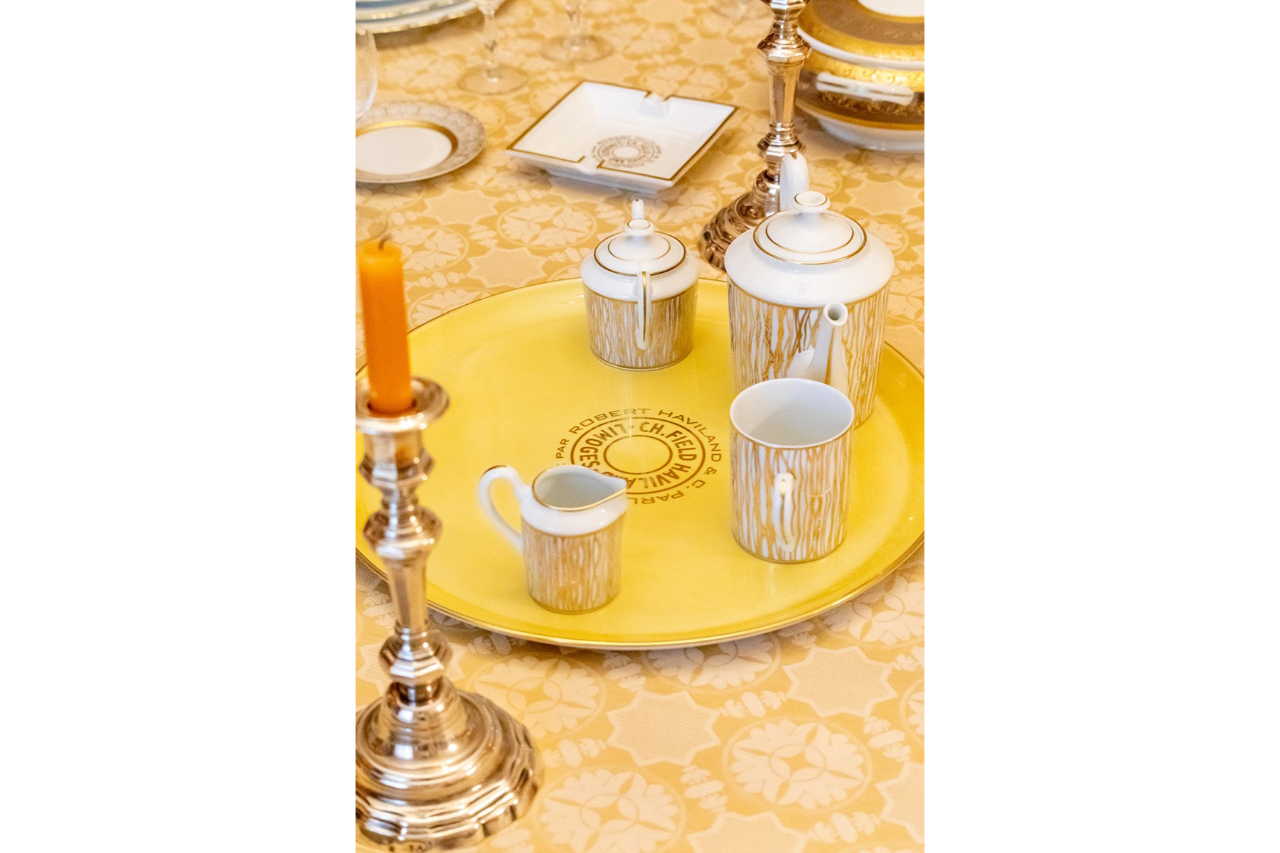
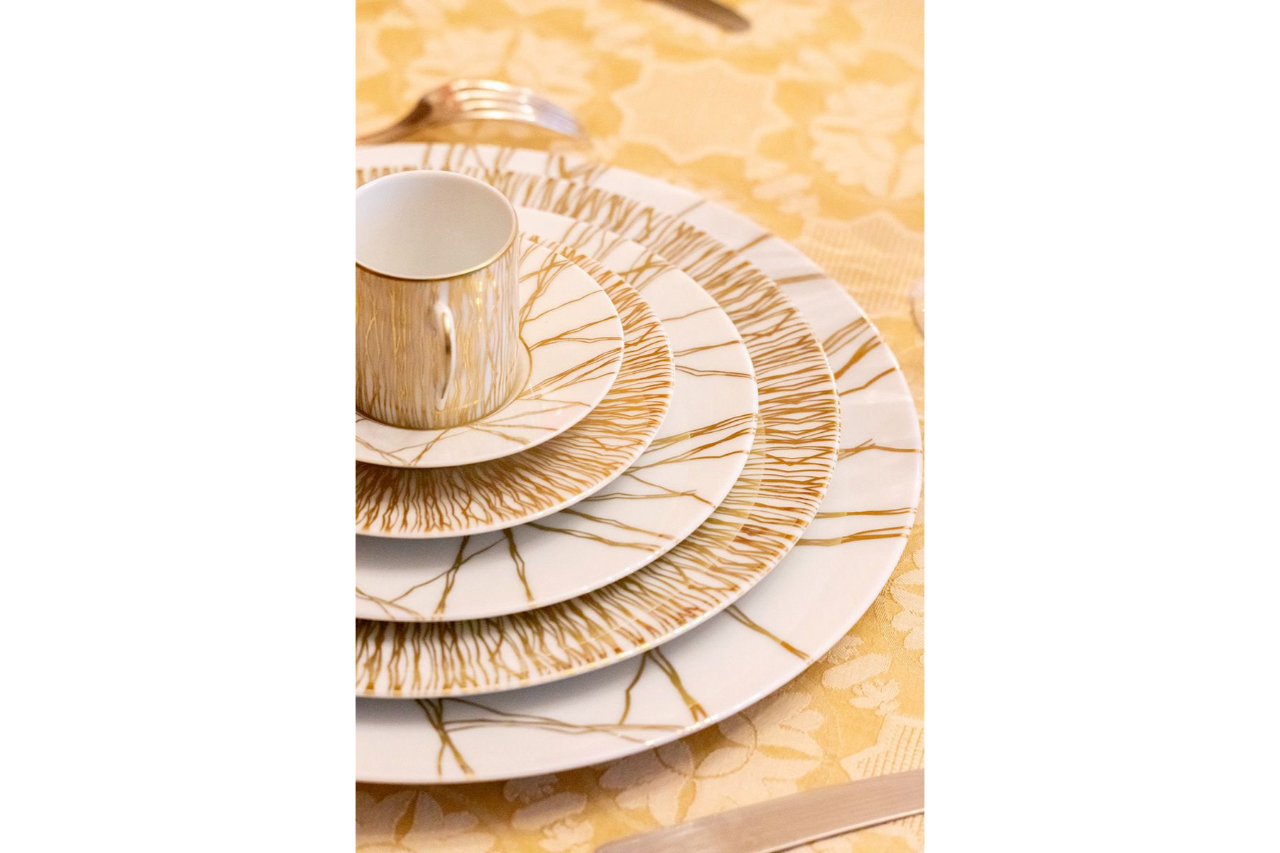
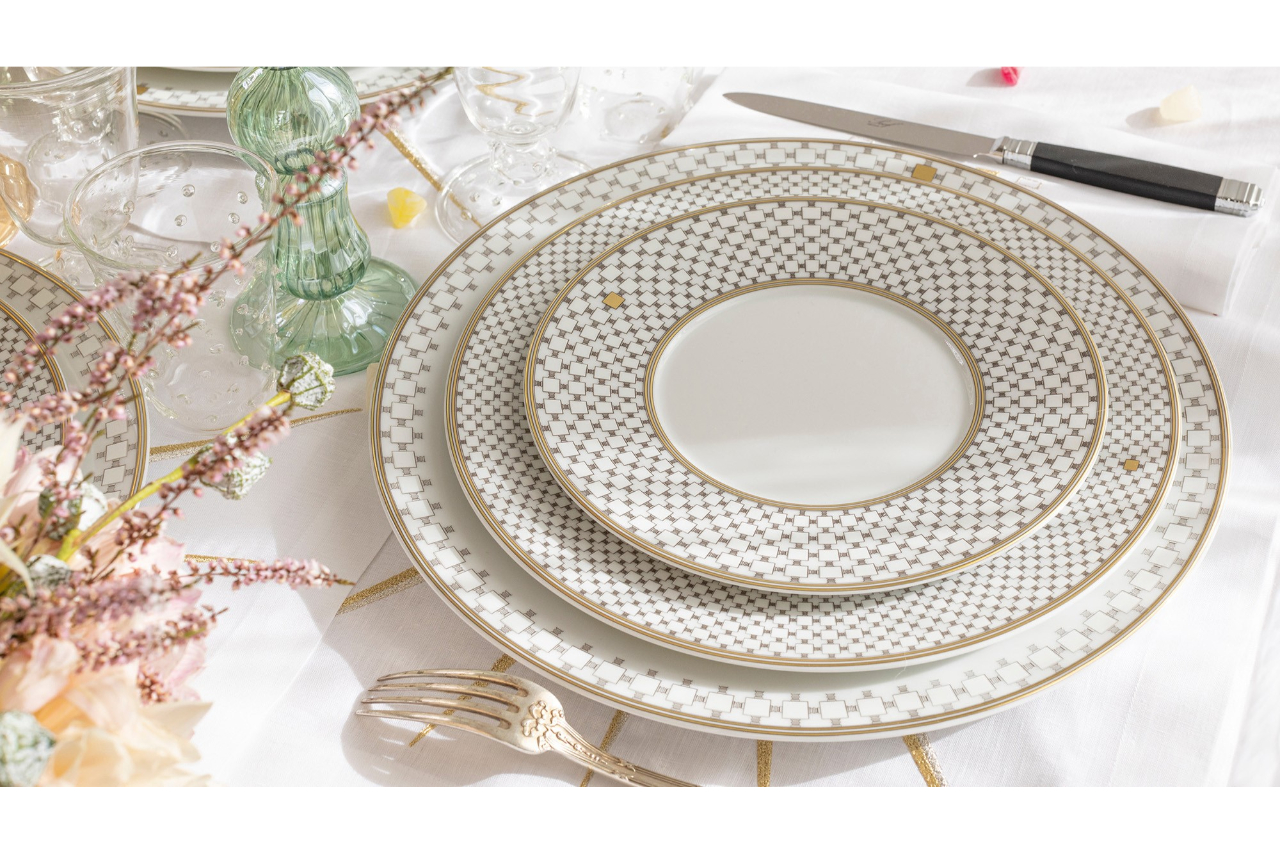
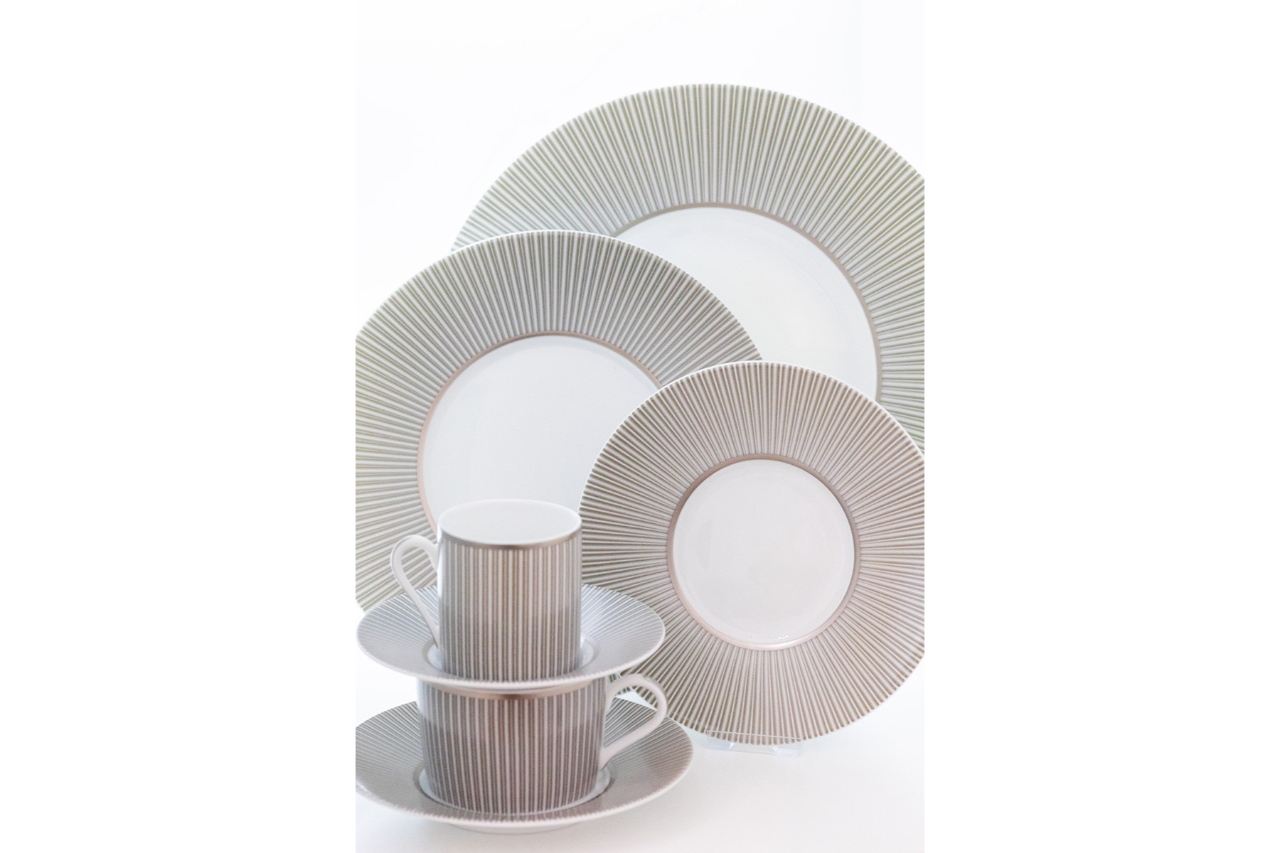
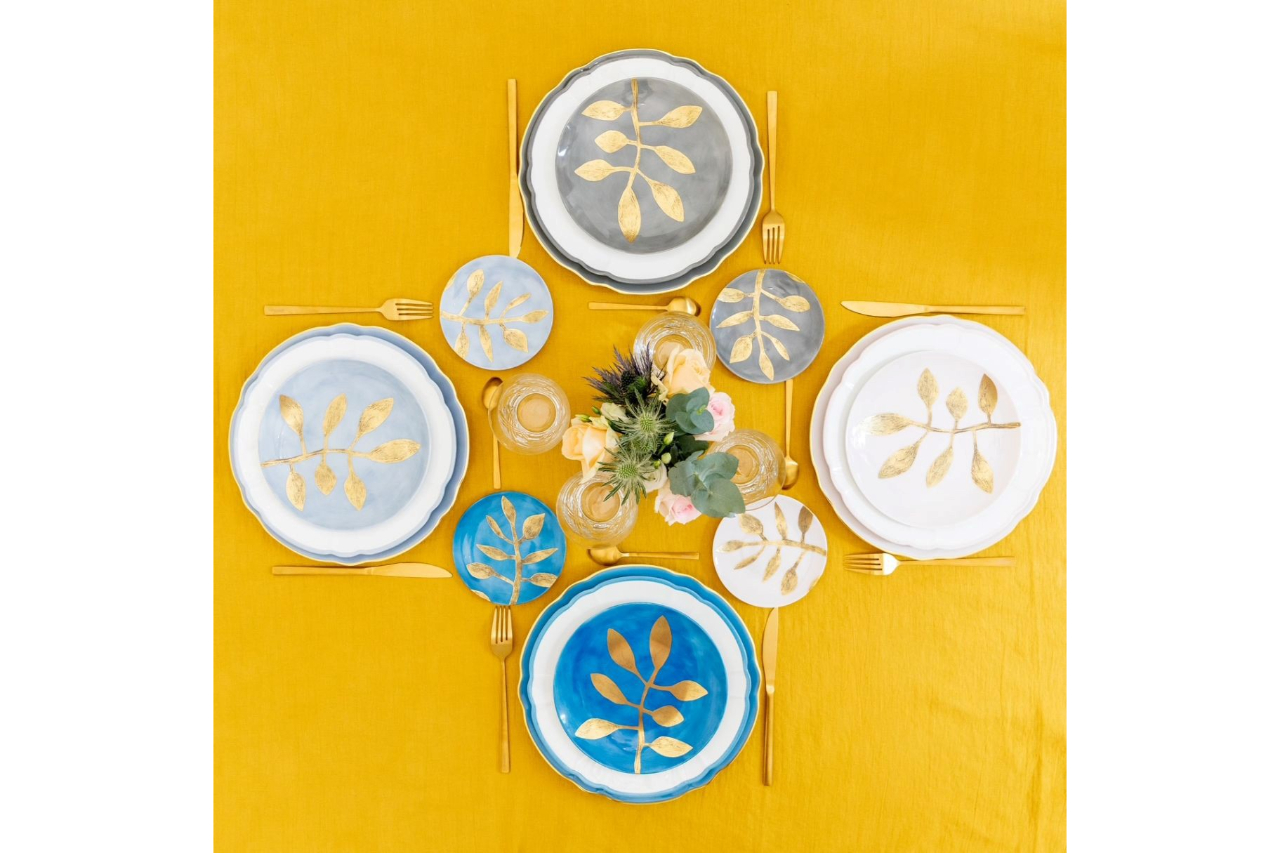
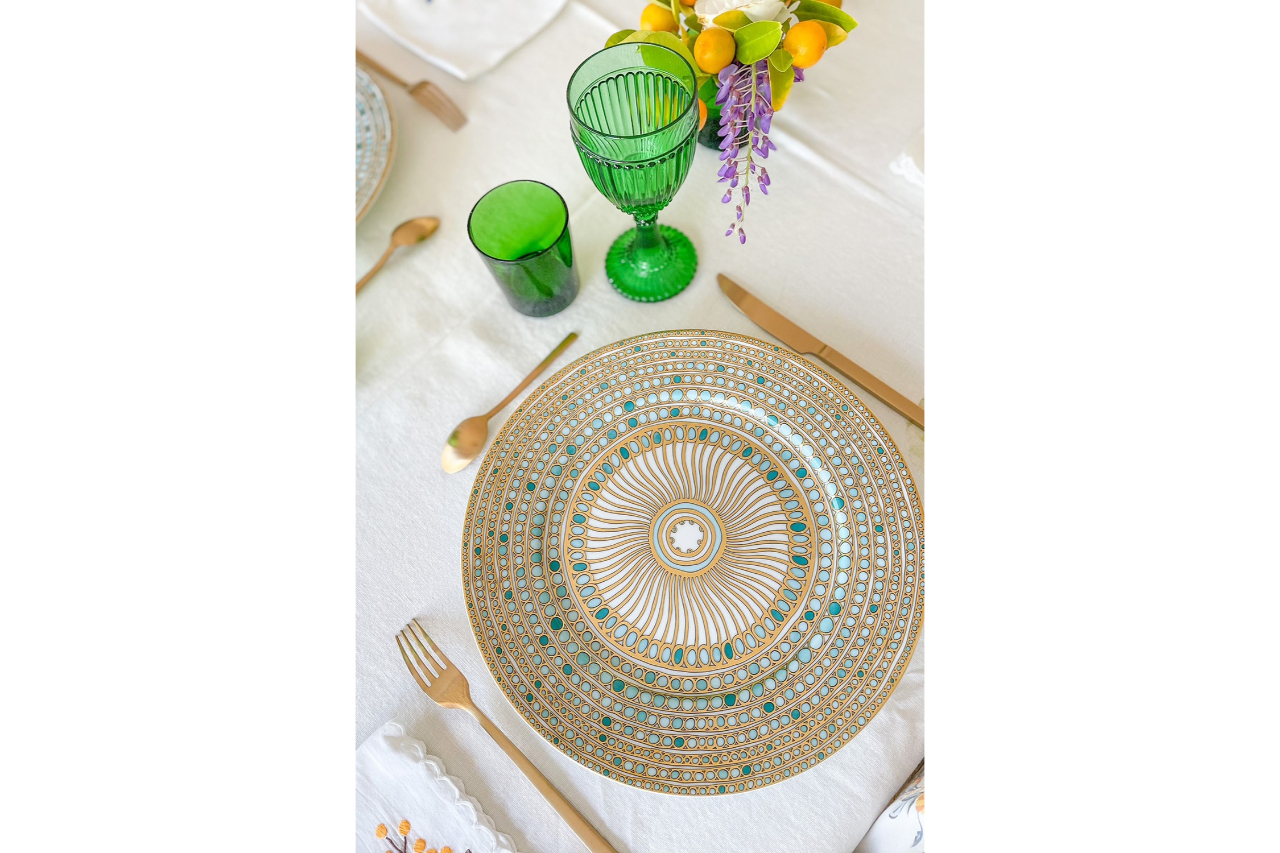
In 2020, the manufacture was taken over by two sisters, Marie-Amélie and Marie-Caroline Guillot, who aim to perpetuate the spirit of excellence and high-quality craftsmanship that has made the company famous for over a century. Museums, institutions, royal families, hotels, and restaurants have chosen the French brand to embellish their tables, with decorations as exclusive as they are extraordinary.
Founded in 1924, Robert Haviland & C. Parlon is a porcelain manufacturer whose exceptional manual skills have conquered the tables of the most prestigious royal families and institutions.
In 2020, the French brand – present at Milano Home in the Manifatture in Scena area, conceived by architect Ulderico Lepreri – was taken over by two sisters, Marie-Amélie and Marie-Caroline Guillot. Forming a new young and dynamic team, they aim to perpetuate the spirit of excellence and high-quality craftsmanship that has made the company famous for over a century. Specializing in porcelain decoration techniques such as chromolithography, hand painting, and spinning, as well as inlay and sandblasting, the Guillot sisters are committed to preserving the company's DNA based on extreme quality, exceptional craftsmanship, and the great creativity of Limoges porcelain decorations.
The history of Haviland dates back to 1771, when William Haviland, the founding father of the dynasty, was born, who became an importer of majolica and porcelain in New York. It was then his grandson, Charles Field Haviland, who moved to Limoges to create his porcelain factory in 1859, in turn passing on his passion for white gold to his grandson, Robert Haviland. It is no wonder, therefore, that the latter also founded his porcelain factory and later acquired his grandfather's brand to pay homage to him.
Over the past hundred years, museums, institutions, royal families, hotels, and restaurants have called on the Manufacture to decorate their tables, with decorations as exclusive as they are extraordinary.
For example, the Embassy service, dedicated in particular to French embassies around the world. At the time, this service was decorated with a blue net underlined with gold thread and marked with the R.F. République Française monogram. Not to mention the tableware in Monet's dining room in Giverny or the Russian plate created in 1762 for Empress Catherine II of Russia and reproduced for the Metropolitan Museum of Art in New York.
The inlay technique, which characterizes the selected range of products, is one of the most sumptuous techniques for porcelain decoration and consists of engraving a design directly into the enamel, which is then enriched with gold or platinum powder. After firing and sandblasting, the decoration is polished and burnished to give it an incomparable shine.
The R. Haviland & C. Parlon porcelain factory became part of the most prestigious French luxury houses in 1984, becoming a member of the Colbert Committee.
In 2011, the manufacture also received the Entreprise du Patrimoine Vivant (EPV) label, awarded by the State in recognition of know-how based on ancient techniques.
The possibilities of creating a colorful, lively, and customizable table are endless.
In 2025, the famous brand continues its mission of pursuing excellence to embellish and make tables even more elegant with creations that combine elegance and luxury.